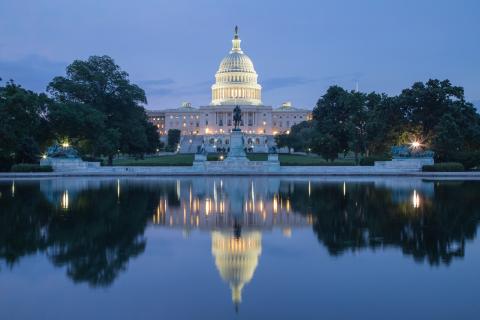- Home
- IBTTA Insights
- Mayors Press Congress for Infrastructure Funding
Stories
Mayors Press Congress for Infrastructure Funding


Last week was another eventful moment for infrastructure on Capitol Hill. But only partly because of activity that originated inside the Washington Beltway.
Five Cabinet secretaries, including Transportation Secretary Elaine Chao, went before the Senate Committee on Commerce, Science and Transportation last Wednesday to affirm the urgency of the country’s $4-trillion infrastructure investment gap.
But with the secretaries still unable to bring a fully-baked funding proposal to the table, Washington Post Editorial Page Editor Fred Hiatt was interested in an even bigger, more compelling presence: the hundreds of mayors and other local officials who visited the Capitol after an estimated 2,000 attended the National League of Cities’ Congressional City Conference in Washington.
“Many of them were asking common-sensical questions,” Hiatt writes. “Such as: Why would you start a trade war when so many people already are struggling to earn a living? Why would you cut taxes when we are desperate to fix potholes, replace rusting water pipes and modernize our ports?”
In a Hole, Still Digging
Gary, Indiana Mayor Karen Freeman-Wilson recalled the day she’d recently spent with a local pothole repair crew in her city. “You had to ask, why are we even doing this?” she said. “We need to be paving this street. Well, where’s that money going to come from? And these are main roads! And then the side streets.”
Little Rock Mayor Mark Stodola, this year’s president of the National League of Cities, recalled the “shocking” desperation that emerged when the state of Arkansas announced a grant program for small-town roadbuilding projects. “Officials worried about school buses getting through in winter, farmers getting their product to market, first responders getting to families in emergencies,” Hiatt writes.
Stodola said, “The mayors’ concerns ranged from rusting pipes in Flint, Michigan, to disaster resilience in Houston, to the age of infrastructure everywhere. As local officials, we’re burdened by this every single day,” he said.
Finding the Dollars—in Many Places
The White House infrastructure plan sets out to use a relatively modest federal contribution—$20 billion per year over 10 years—as a catalyst for state, local, and private infrastructure investment. The mayors said they had no fundamental objection to that plan.
“But many of them already have raised taxes, while some of them are preempted by state governments from doing more,” Hiatt writes. “And although private-public partnerships make sense in some cases, many small or rural governments have no assets of interest to the private sector.”
Which underscores a critically important point in the argument for tolling and other forms of user financing as a central tool in the highway funding toolbox, but not a one-size-fits-all solution.
All Hands on Deck
IBTTA has made the case for years that the nation’s highway infrastructure is incredibly wide and diverse, with stunning differences between a commuter route in Atlanta, a freight corridor in Pennsylvania, and a rural road in Wyoming. Now, add Gary, Indiana and rural Arkansas to the list on examples and growing needs.
The crushing size of the infrastructure deficit makes it imperative for the government to bring every proven funding option to the table, including the full menu of private and public-private possibilities. But it also means using every tool to best advantage, so that every dollar invested delivers the greatest impact.
No one will ever propose to set tolls so that an ambulance, a school bus, or farmers’ delivery vans can pass smoothly along a rural road in Arkansas.
If tolling on the state’s major highways (which is not an unknown concept) takes a couple of big-ticket projects off the infrastructure priority list, then that frees up scarce public dollars for other projects. Legislators at all levels should consider all financing and funding options to secure a bright future.
Based on their comments and meetings last week, it sounds like the mayors are onboard.
Learn more about innovative funding and financing strategies for surface transportation. Attend IBTTA’s Summit on Finance & Policy, July 22-24, 2018 in Portland, OR.

Joining IBTTA connects you to a global community of transportation professionals, offering unmatched opportunities for networking, knowledge-sharing, and collaborative innovation in the tolling and transportation sector.
Follow IBTTA on social media for real-time updates on transportation trends and collaborative opportunities.





